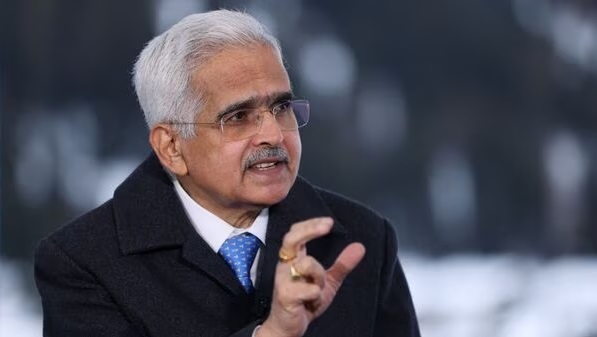
There’s a double boost for the economy as factory production surges ahead while retail inflation sees a decline
Data released on Monday indicated that the Indian economy exhibited resilience at the start of the year, with industrial output increasing and inflation decreasing.
According to the statistics ministry, industrial output growth rebounded to 3.8% in December following a dip to 2.4% in November, marking an eight-month low. Meanwhile, consumer price index (CPI)-based retail inflation declined to a three-month low of 5.1% in January.
The most recent data on factory output suggests a resurgence in manufacturing momentum in December following a period of deceleration. From April to December, factory output grew by 6.1%, slightly surpassing the 5.4% recorded during the corresponding period a year ago.
In December, inflation dropped to 5.1% from November’s 5.7%, primarily due to a moderated increase in the prices of food items such as cereals, milk and milk products, fruits, pulses, and spices. While it remains higher than the central bank’s target of 4%, it has consistently remained within the tolerance range of 2-6% for the past five months.
In January, food inflation decreased to 8.3%, compared to December’s 9.53%, which experienced significant price hikes in vegetables and other food items including pulses, spices, and cereals. Consumer food price index, which constitutes nearly half of the overall consumer price basket, registered at 8.7% in November, 6.61% in October, and 6.62% in September.
Shilan Shah, Deputy Chief Emerging Markets Economist at Capital Economics, remarked, “There is a genuine alleviation of price pressures underway, leading us to anticipate the possibility of rate cuts being considered in the latter half of the year.”
Previously, elevated inflation rates led the government to implement supply-side measures, including the release of significant cereal stocks from reserves and actively regulating the imports and exports of pulses to maintain adequate supplies. Additionally, the government imposed restrictions on the exports of rice and sugar in efforts to control inflation.
Gaura Sen Gupta, an economist at IDFC First Bank, commented, “Housing inflation continues to be lower than anticipated, despite robust urban demand.”
According to a survey conducted by Mint involving 18 economists, it was estimated that retail inflation would decline to 5% in January, mainly due to a decrease in food inflation. In January 2023, retail inflation stood at 6.5%.
The Reserve Bank of India (RBI) opted to maintain policy rates unchanged last week, indicating that any potential interest rate cuts might be delayed.
Controlling inflation is a crucial function for the central bank, and one of its primary tools is regulating interest rates. When interest rates are higher, borrowing becomes more expensive, discouraging borrowing among banks, financial institutions, and the public. Additionally, reducing the money supply in the market can also lead to a decrease in consumer spending.

Meanwhile, the Index of Industrial Production (IIP) indicated a 3.8% increase in factory output in December 2023, compared to 5.1% in December 2022. Manufacturing output experienced a 3.9% annual rise, while mining saw a 5.1% increase, and power generation grew by 1.2%.
Capital goods production, serving as an indicator of fixed investments in the economy, increased by 3.2% annually in December. Additionally, consumer durables production, reflecting consumer sentiment, also saw a 4.8% annual rise during the same period.
“Positive sequential expansion in the mining, manufacturing, and electricity domains has bolstered growth for the month, despite facing an unfavorable base,” stated Rajani Sinha, chief economist at Care Ratings Ltd.
“The notable observation was the resurgence observed in the output of consumer durables and non-durables, with growth rates of 4.8% and 2.1%, respectively. Nonetheless, it is imperative to ensure the continuation of this trend for industrial activity in the upcoming months,” Sinha further commented.
In December, the monthly growth in industrial output was the second lowest in the fiscal year 2023-24, following November.
The industrial output growth rate, initially recorded at 4.61% in April 2023, continued its upward trajectory with significant increases of 10.9% and 11.6% in August and October, respectively. This growth was propelled by the expansion in mining output, heightened demand for manufactured goods during festive seasons, and increased electricity generation. However, it witnessed a decline in November, marking the lowest growth rate of the year.
According to the latest government data, the Indian economy surpassed expectations by registering a robust 7.6% GDP growth in the September quarter, primarily driven by expansion in the manufacturing sector. As a result, the RBI has revised its growth forecast for FY24 to 7% from the previous estimate of 6.5%.
The initial advance estimates released by the government last month project India’s growth for FY24 at 7.3%, supported by continued growth in investment and strong performance in manufacturing, construction, and specific service sectors.
In January, inflation rates for vegetables and pulses were 27.03% and 19.54% respectively, down from the 27.64% and 20.73% respectively reported in December.
In January, Delhi and Kerala had the lowest retail inflation rates at 2.56% and 4.04% respectively, while Odisha (7.55%) and Telangana (6.34%) experienced the highest price increases.
However, in 10 out of 22 states, inflation rates exceeded the average, suggesting that retail inflation remains significantly elevated in several major states such as Maharashtra, Uttar Pradesh, Gujarat, and Karnataka.

